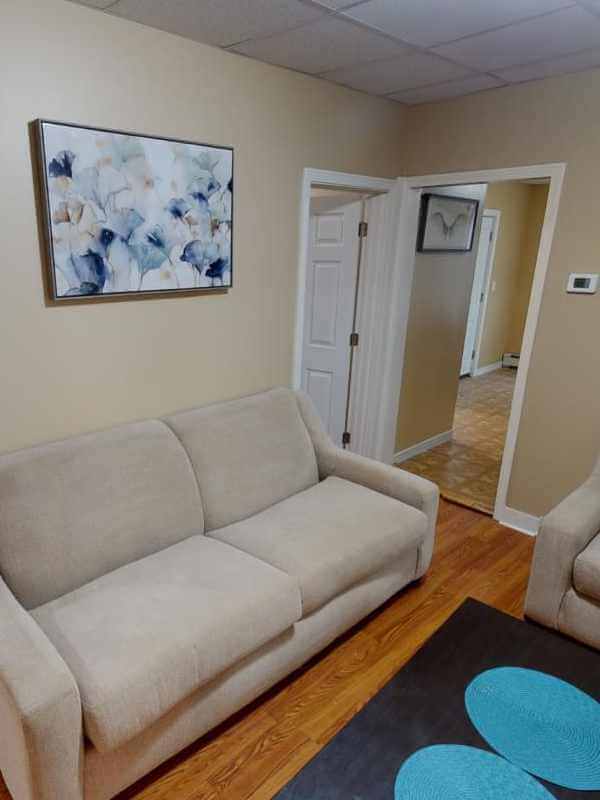Content
It’s easy to confuse sober living houses with rehab centers or halfway houses, but there are some stark differences among them. Rehab centers offer intensive recovery programs that help residents overcome addictions by following strict rules and regulations. Halfway houses usually require that residents complete a formal rehab treatment program and they limit the amount of time residents can stay to 12 months. Most of the rent for the Options SLHs was paid by General Assistance or Social Security Income, so a variety of low income residents could be accommodated.

Specifically, it helps residents resolve their mixed feelings (i.e., ambivalence) about living in the SLH and engaging in other community based services. Thus, the intervention is a way to help them prepare for the challenges and recognize the potential benefits of new activities and experiences. These measures were taken from the Important People Instrument (Zywiak, et al., 2002). The instrument allows participants to identify up to 12 important people in his or her network whom they have had contact with in the past six months. The drinking status of the social network was calculated by multiplying the amount of contact by the drinking pattern of each network member, averaged across the network. The same method is applied to obtain the drug status of the network member; the amount of contact is multiplied by the pattern of drug use and averaged across network members.
Characteristics of Sober Living Houses
These became the first sober houses in California – some of which are still operating today. In the communal home, residents must pay their own way and may be required to take on more responsibility than they would in a rehab center. For example, members must often pay for rent and hold a steady job or attend school. They must also contribute to the community by helping with chores, taking responsibility for their actions, and respecting and obeying all house rules. Once leaving an inpatient facility and returning home, you may be struggling with adjusting back to daily life. Sober living homes offer an in-between recovery option that allows you to reinforce the lessons learned in rehab.
- However, some houses will allow other types of activities that can substitute for 12 step groups, provided they constitute a strategy for maintaining ongoing abstinence.
- This way you will have a plan of action for what to do during these times and have healthy ways to manage triggers in your daily life.
- Our study design had characteristics that DeLeon, Inciardi and Martin (1995) suggested were critical to studies of residential recovery programs.
- You’ll meet and interact with different kinds people in Recovery Housing, and they will have their own perspective on sobriety that you can apply to your life.
- However, there is no limit to how long an individual can remain in sober living, provided they continue to follow all the rules.
If you’re interested in a substance abuse halfway house, you should ask the professionals working with you about them. They’ll be able to give you the best recommendations because of their familiarity with your specific circumstances. There are typically not many restrictions placed on sober homes — other than you must be sober to stay in them. The majority of residents are likely to have already completed a treatment program, and these living environments may be best for people who have already maintained some level of sobriety. Choose a house manager of the appropriate gender who will help you run the sober living house.
Affordable Housing Models and Recovery
To answer the question of “how do sober living homes work” doesn’t really require splitting hairs between these different types of residences, so we’ve elected to treat them as one collective type of program. There are various resources available for developing the skills necessary to find and maintain employment. Resources extend from life skills development for individuals to training and staff development for businesses.
Having said that, this whole area is very under-developed, with little in the way of recovery housing being commissioned (or even known about), though there is evidence that this is changing a bit for the better. Residents related the impact of trauma and how it shaped their journey into addiction. This took many forms and the researchers note how abuse of drugs and alcohol were identified as both the cause and consequence of trauma.
Risks and Downsides of Sober Living Homes
This allows individuals in recovery to feel like they are easing back into normal life and can start going back to their daily tasks and responsibilities. Although sober living homes are less restrictive than inpatient facilities, they still have rules that residents sober house must abide by, including curfews and group meeting attendance. These are residential facilities that provide structure and support for those healing from addiction. They are designed to be a transitional space from residential treatment to mainstream society.

There are several limitations to the study that are important to consider. First, we could not directly compare which type of SLH was most effective because there were demographic and other individual characteristics that differed between the two types of houses. Second, individuals self selected themselves into the houses and a priori characteristics of these individuals may have at least in part accounted for the longitudinal improvements. Although self selection can be viewed as a weakness of the research designs, it can also be conceived as a strength, especially for studying residential recovery programs. Our study design had characteristics that DeLeon, Inciardi and Martin (1995) suggested were critical to studies of residential recovery programs.
Effectiveness of Going to a Sober Living House
We suggest that efforts to translate research into treatment have not sufficiently appreciated how interventions are perceived and affected by various stakeholder groups (Polcin, 2006a). We therefore suggest that there is a need to pay attention to the community context where those interventions are delivered. In a recent analysis of CSTL residents we looked at psychiatric severity as a predictor of alcohol and drug outcome using growth curve models (Korcha et al (2010). We found that a subgroup of about a third of the residents had significantly higher psychiatric severity than other residents and had significantly worse outcomes. Our work on identifying and describing these residents with worse outcome is continuing.
Can sober people have fun?
Staying away from alcohol or drugs can be tough. However, being sober doesn't mean you have to stop having fun. There are plenty of activities you can do that don't involve substances and can actually be more enjoyable without them.
In our comprehensive guide, we share the truth about sober living homes, including what it is like living in a sober house and how it factors into the long-term recovery process. The option that sober living homes provide is one that is significantly useful to many in recovery. Generally, those that are staying at a sober living home will remain there for at least 90 days, but stays can be arranged for as long as necessary. Consider asking folks at a recovery meeting or touching base with any sober friends you may have. If you recently completed a treatment program, contact the staff there for referrals to local sober living homes. Research on sober living houses also states that residents experience a higher possibility of securing employment and a lower likelihood of getting arrested.
Sober Housing
Halfway houses, like other recovery and sober-living houses, are intended to gently reintroduce tenants back into society, free from the pressures and triggers of a potentially dangerous home environment. The National Association of Addiction Treatment Providers is a nonprofit professional society designed to offer support to organizations across the continuum of care. We host nightly “family” dinners, weekly meetings, https://goodmenproject.com/everyday-life-2/top-5-tips-to-consider-when-choosing-a-sober-house-for-living/ and regular outings to create an environment that promotes cohesive unity. The brotherhood between house members empowers everyone to walk through tribulations with much-needed support, and to meet our high standards. In the United States, 60.1% of individuals ages 12 and older use at least one substance (like tobacco, alcohol, or an illicit drug), according to the latest National Survey on Drug Use and Health.
